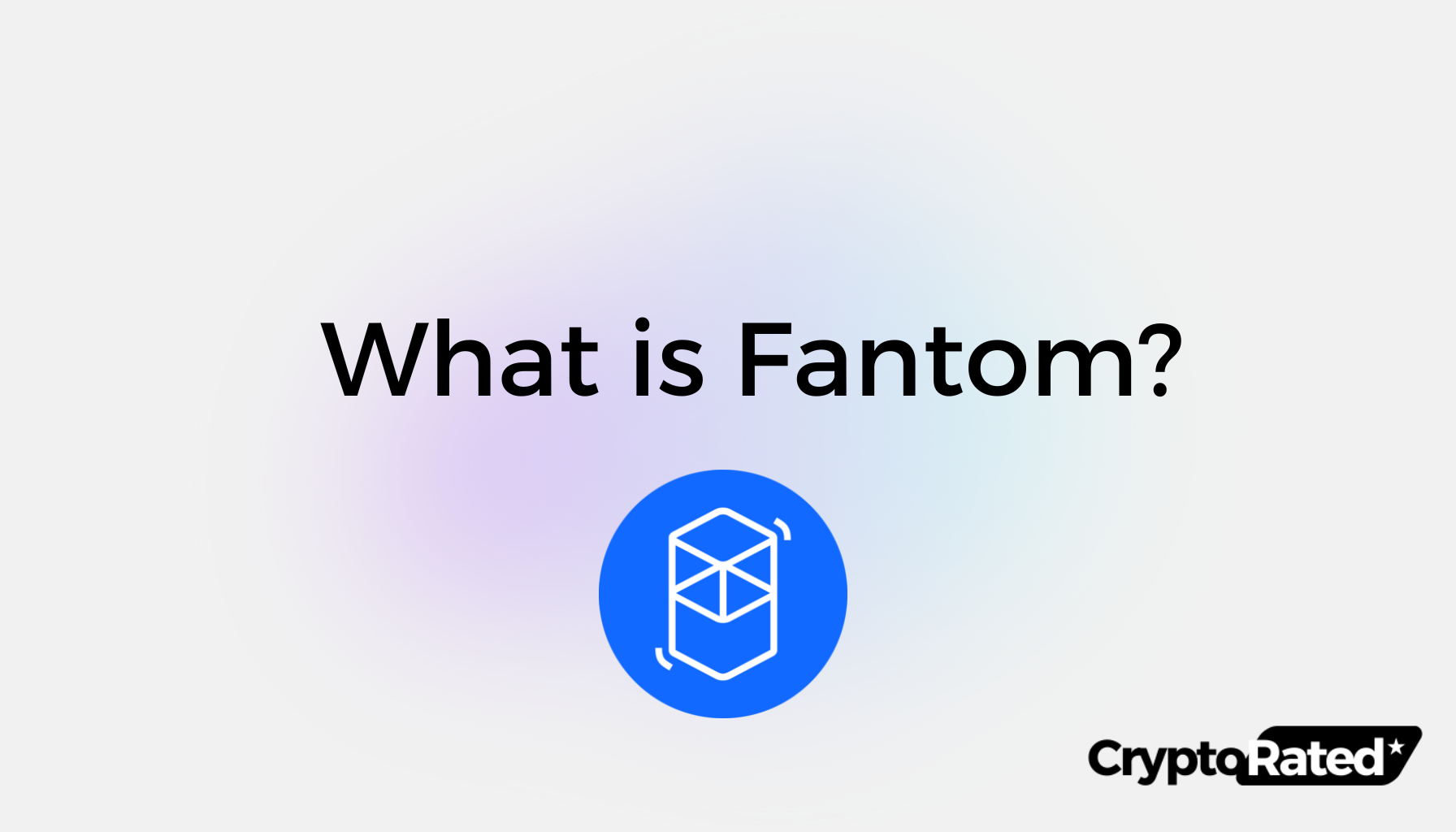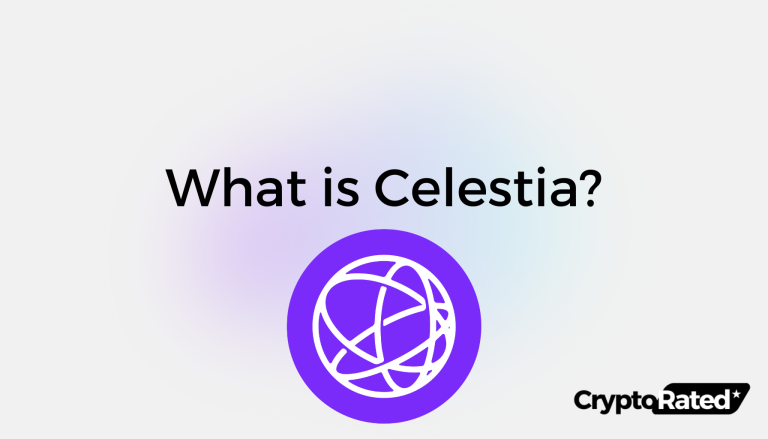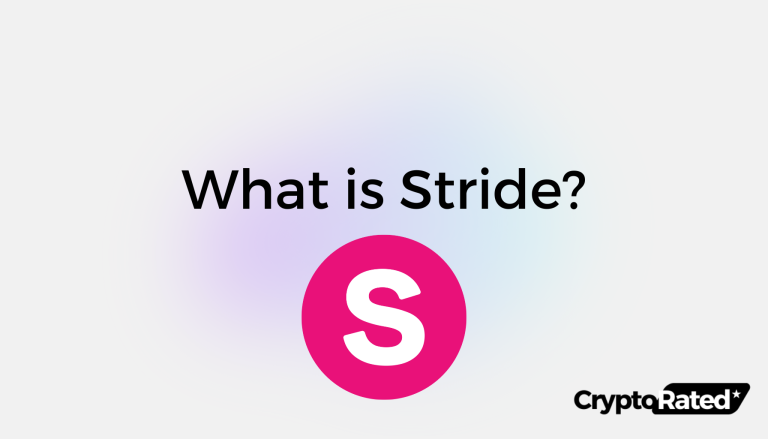
What is Fantom (FTM)?
Fantom (FTM) is a decentralized, permissionless, and open-source smart contract platform for building crypto DApps. Founded in 2018 by South Korean computer scientist, Dr. Ahn Byung Ik, Fantom differs from traditional blockchain systems because it is based on Directed Acyclic Graph (DAG) technology.
In a nutshell, DAG technology is a data modeling and structuring technology that uses vertices and edges to represent transactions, unlike blockchains that use blocks. Such architecture allows for faster and more scalable transactions.
The native token of the Fantom network is FTM and it is used for governance activities, compensating validators, and providing network security.
The Fantom ecosystem is designed to address the shortcomings of prior blockchain platforms, such as lengthy transaction times. It has since grown to become one of the most popular blockchains for DeFi transactions.
Sustaining the network is Lachesis, an ultra-fast consensus protocol, and the Opera Chain, the Fantom mainnet with staking and EVM support, to ensure fast and secure transactions.
Users can store, send, receive, and stake FTM on desktop, mobile, and hardware wallets. The FTMScan explorer built by the Fantom Foundation allows users to explore the Fantom ecosystem.
Key Takeaways
- Fantom is a decentralized, highly scalable, and secure, Layer-1 blockchain.
- It uses DAG technology to provide faster and more efficient transactions.
- FTM is the native token of the Fantom network and is used for governance activities, compensating validators, and providing network security.
What Makes Fantom Unique?
Fantom is a next-generation blockchain platform that aims to address the scalability issues of traditional blockchain systems such as Bitcoin. The platform utilizes a leaderless proof-of-stake (PoS) protocol that does not compromise security or decentralization. Transactions on the FTM network take on average between 1-2 seconds to complete1. Additionally, transaction costs on the Fantom network are significantly lower than those of Bitcoin.
One of the unique features of Fantom’s network is that it is self-contained2, which means that the performance of one area’s traffic congestion has no bearing on other areas of the network. This is made possible by Fantom’s high level of scalability, which allows every application to have its own personalized blockchain with specific tokens, governance rules, and tokenomics. These decentralized systems interact with each other while working independently in their own zones.
Fantom’s Opera mainnet is Ethereum Virtual Machine (EVM)-compatible and supports full smart contract functionality via Solidity. This makes it easy for developers to build decentralized applications (dApps) on the platform. Moreover, Fantom’s network is highly secure and decentralized, which ensures that users can transact on the network with confidence.
In summary, Fantom’s unique combination of scalability, speed, and security make it one of the most promising blockchain platforms. Its self-contained network architecture and support for EVM-compatible smart contracts make it an ideal platform for building decentralized applications.
How Fantom Solves the Blockchain Trilemma Problem
Fantom is a blockchain network that solves the “Blockchain Trilemma,” which refers to the challenge of balancing speed, security, and decentralization in blockchain systems. To achieve this balance, Fantom uses a permissionless protocol and asynchronous Byzantine fault tolerance (aBFT) to process transactions, which speeds up the whole process.
Fantom’s DAG-based aBFT consensus algorithm, Lachesis, outperforms both Classical and Nakamoto models3. Lachesis is an efficient, scalable, and secure alternative that allows developers to create peer-to-peer apps without building their own networking layer.
Lachesis is asynchronous, meaning that each participant can process commands at their own pace. There is no leader and no one plays a “special” function. Additionally, Lachesis is Byzantine fault-tolerant (BFT), which means it can achieve consensus in the presence of problematic nodes, including malicious activity. Finally, Lachesis’ output is immediately usable, and transactions are typically confirmed in 1-2 seconds, eliminating the need to wait for block confirmations.
Lachesis connects to other Lachesis nodes through peer-to-peer networking. The DAG aBFT consensus algorithm is used to ensure that the same commands are processed in the exact order.
The peer-to-peer networking function enables nodes to come to consensus by establishing the true final order of transactions by batches. These ‘batches’ of events form blocks. Once all nodes are in agreement with the honest nodes, the blocks are added to chain. As a result, compared to synchronous BFT, which demands a greater communication overhead, Lachesis achieves a faster time to finality.
Fantom’s approach to solving the “Blockchain Trilemma” is unique and innovative, providing a solution that balances speed, security, and decentralization. The result is a blockchain network that can handle a wide range of use cases, from financial transactions to supply chain management.
What is Fantom (FTM) used for?
FTM is the primary token of the Fantom network and is used for various purposes like payments, governance, staking, network fees, and network security.
Payments
FTM can be used for payments on the Fantom network. The network’s quick finality speeds up transactions, taking around a second, making it perfect for exchanging money. Additionally, the high throughput and low costs (averaging $0.05 as of December 20234) make it an attractive option for payments.
Governance
FTM is required for on-chain governance, where stakeholders can propose and vote on modifications and improvements through governance. As Fantom is a fully permissionless and leaderless decentralized ecosystem, on-chain governance is in charge of all network decisions. Therefore, the governance token, FTM, must participate in the voting process.
Staking
FTM can be used to stake to secure the Fantom network and receive FTM tokens as a reward without requiring any special hardware or software. Stakers can lock their tokens, and validators need to hold a minimum of 500,000 FTM to run a node5. Fees and epoch rewards are given to stakers and validators for their services.
Network fees
FTM is used to pay for network fees such as fees for deploying Fantom smart contracts or creating new networks or even transaction fees. The fee ensures that the network is not an easy target for spam, and a malicious user cannot cause speed issues or clog the ledger with meaningless data. Although the fees on Fantom are pretty low, they are sufficient to keep the attackers away by making entry into the system exceedingly costly for a malevolent actor.
Network security
The FTM token aims to secure the network with the use of a proof-of-stake system. Validator nodes need to hold a minimum of 500,000 FTM, and stakers need to lock up their FTM. In return for the service, both the nodes and the stakers are rewarded with epoch rewards and fees. The goal is to prevent centralization and ensure that the network remains secure.
How to Purchase Fantom Crypto?
Fantom (FTM) can be purchased on all major cryptocurrency exchanges such as Binance, Uniswap and KuCoin. FTM can be bought using Bitcoin (BTC), Ethereum (ETH), Tether (USDT), or Binance Coin (BNB). To buy FTM on KuCoin, Binance or any other exchange, follow the steps listed on the respective exchange’s official website.
How to Store FTM?
Storing FTM on exchanges is not recommended due to custodial risks and loss of staking rewards. Instead, users can safely store FTM and Fantom-based coins like USDC and fUSDT using popular wallets such as fWallet, MetaMask, Ledger, and other mobile wallets.
fWallet is the official Fantom wallet that allows users to receive, transfer, stake FTM, and access the Fantom DeFi ecosystem. MetaMask facilitates communication with Fantom DApps and storage of mainnet FTM.
Ledger Nano is the most popular hardware wallet and the safest way to store mainnet FTM and engage with DApps on Fantom. Coinbase wallet is also a popular option for storing FTM and accessing the Fantom network with over 1 million users.
Other wallet types that support the FTM token can be found here. It’s important to choose a wallet that meets your specific needs and provides a high level of security.
Staking on the Fantom network
What is the distinction between claiming rewards, and claiming and restaking rewards?
Staking on the Fantom network is a process that involves locking up FTM tokens to validate transactions and secure the network. In return, stakers are rewarded with FTM tokens. Staked tokens can be unlocked and unstaked at any time.
When staking FTM tokens, validator nodes and stakers must follow specific parameters. It is possible to estimate staking rewards using the staking rewards calculator provided by Fantom.
Drawing upon a ‘fluid staking model’, Fantom offers two options for staking: Without a lock-up period for a minimum APR or with a lock-up period of between 14 and 365 days for access to higher APRs6.
The table below provides a quick reference for comparing the requirements and rewards for both stakers and validator nodes:
| Comparison | Delegation | Validator Node |
|---|---|---|
| Passive | + | – |
| Expertise Required | 1 FTM | 500 000 FTM |
| Minimum Requirements | None | DevOps |
| Staking Rewards | Staking rewards -15% fee to delegated validator | Staking rewards +15% fee from delegators’ rewards |
In summary, staking or running a validator node on the Fantom network involves locking up FTM tokens to validate transactions and secure the network. While running a node offers higher rewards, it requires an understanding of DevOps and ongoing active management.
Is Fantom a Good Investment?
While Fantom (FTM) is a highly scalable platform for enterprise applications and crypto DApps, it is not without risks. The crypto market is known for its volatility and is prone to regular hacks, scams, and cyber threats, making FTM an insecure investment asset like many others. Therefore, it is important to do your research into the protocol, team, sponsors, and partnerships before committing your funds. Additionally, never invest more than you can afford.
Investing in FTM requires careful consideration and a thorough understanding of the market. It is recommended to keep yourself updated with the ways crypto heists take place and protect yourself by using various security measures like 2FA and avoiding custodial wallets. Ultimately, investing in FTM is a personal decision that should be made after weighing the risks and potential rewards.
FTM vs. MATIC
| FTM | Polygon | |
|---|---|---|
| Purpose | General purpose layer 1 solution | Layer 2 scaling solution |
| Consensus Protocol | Lachesis | PolyBFT |
| Transaction Speed | 4,500 TPS | 65,000 TPS |
| Smart Contract Language | Solidity | Multiple |
| Token Use | Governance activities, compensating validators, and providing network security | Gas fees, staking, and liquidity provision |
| Market Cap (as of Dec 1, 2023) | $14.2 billion | $21.8 billion |
Fantom (FTM) and Polygon (MATIC) are both altcoins that offer scalability to existing blockchains. However, they differ in several ways. FTM is a general-purpose layer 1 solution that uses Lachesis as its consensus protocol and has a transaction speed of up to 4,500 TPS. On the other hand, Polygon is a Layer 2 scaling solution that uses PolyBFT as its consensus protocol and has a transaction speed of up to 65,000 TPS.
FTM uses Solidity as its smart contract language and its native coin (FTM) can be used for governance activities, compensating validators, and providing network security. In contrast, Polygon uses multiple smart contract languages and its native coin (MATIC) can be used for gas fees, staking, and liquidity provision.
As of Dec 1, 2023, MATIC has a higher market cap ($21.8 billion) than FTM ($14.2 billion).
The Future of the Fantom Crypto
Fantom, a more secure and environmentally friendly cryptocurrency than Bitcoin or Ethereum, uses the PoS consensus method and Lachesis (Fantom’s aBFT consensus algorithm) to set the nodes’ communication rules. Going forward, the community can expect new features in Andre Cronje’s Ve(3,3) project, including the launch of its own “emission-based” coin on Fantom to balance the ecosystem’s players as well as the much-anticipated Fantom Virtual Machine (FVM) scheduled for release in Spring 20247. To enhance the platform’s performance and build trust within the community, the founders and developers will continue to seek partnerships and sponsors.
Frequently Asked Questions
What are the benefits of staking with Fantom?
Staking with Fantom allows users to earn rewards in the form of FTM tokens while helping to secure the network. The Fantom staking mechanism is designed to be flexible and inclusive, with options for both short-term and long-term staking. Additionally, staking with Fantom provides users with the opportunity to participate in network governance and decision-making.
How can users securely manage their assets using the Fantom Wallet?
The Fantom Wallet is a secure and user-friendly wallet that allows users to manage their FTM tokens and other cryptocurrencies. The wallet provides users with a range of features, including the ability to send and receive tokens, view transaction history, and connect to decentralized applications. The wallet is available for both desktop and mobile devices and is designed to be easy to use while maintaining a high level of security.
Which cryptocurrencies are currently supported by the Fantom bridge?
The Fantom Bridge supports a range of different cryptocurrencies, including Bitcoin, Ethereum, Binance Smart Chain, and more. The bridge allows these cryptocurrencies to be transferred onto the Fantom network, where they can be used to participate in decentralized applications and earn rewards through staking.
What are the latest developments announced by the Fantom Foundation?
The Fantom Foundation has recently announced several new developments, including the launch of Fantom Finance, a decentralized exchange and lending platform, and the integration of Chainlink price feeds into the Fantom network. Additionally, the Foundation has announced partnerships with a number of other blockchain projects, including Avalanche and Polygon.
How does Fantom ensure the sustainability and eco-friendliness of its blockchain?
Fantom uses a Proof-of-Stake consensus mechanism, which is designed to be more energy-efficient than traditional Proof-of-Work mechanisms. Additionally, Fantom has implemented some other sustainability measures, including a carbon offset program and a commitment to using renewable energy sources.
What tools are available for analyzing transactions on the Fantom network?
There are many different tools available for analyzing transactions on the Fantom network, including FantomScan, a block explorer that allows users to view detailed information about individual transactions and blocks. Additionally, there are several third-party analytics tools available, including Covalent and Dune Analytics, which provide more advanced analytics and visualization capabilities.

WRITTEN
Mariquita de Boissière
Through storytelling and detailed research, Mariquita connects the brightest developer talent and most motivated community members to web3 changemakers. From contributing top-of-funnel educational content for web3 onboarding projects like Surge.io to collaborating with Hedera’s HBAR Foundation on content marketing strategy, Mariquita has worked with some of the top artists, founders and builders in the space.




